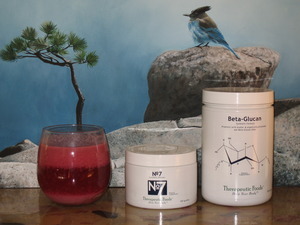Harbinger to Mass Extinction
|
Dear Friends, 
Not counting the microbial world, and just looking at the plant and animal world, how many species would you estimate that there are on mother earth? The rough estimate would be around 10,000,000. Determining how many microbial species there are is a tough task, for several reasons. For one, most microbes cannot be grown in culture, which makes it hard to determine their genetic identity. We use the nucleotide sequences of the 16S rRNA gene to determine species. These sequences are unique for each species, and have remained a constant, which means they are highly conserved for each species (they do not change), thereby providing their fingerprint over the last millenium. These sequences also show how closely related one species is to the next and what ancestor they may share in common. As you can see there are three domains— Bacteria, Archaea and Eucarya. The bacteria and archaea are prokaryotes (organisms without nuclear membranes), and the eukaryotes posses a nucleus with a nuclear membrane. Thus from the bottom group you have the protozoa (microscopic), fungi (some microscopic), plant and animals. From the Tree of Life diagram it appears that the bacteria/archaea world will have much more biodiveristy than the eucarya world. And, this is certainly true, many times more. Using the new genetic testing technologies scientists are combing the earth, taking samples from the deepest ocean floors to volcanoes, from the Dead Sea to the Great Salt Lake, from Old Faithful geyser at Yellowstone to Lake Vostok which is buried under Antarctic ice. They are finding bacteria and archaea, and are coming to grips with just how incredibly vast the microbial world is.
In the beautiful Sustaining Life, which is must read for all medical professionals, Chivian and Bernstein make the point that our very survival is dependent on biodiversity and that the rate of species loss to extinction is a harbinger to the next mass extinction. The present rate of loss of species is a thousands times above the baseline before Homo sapien came on the scene. There was only this rate of loss in deep time before the past five mass extinction of the biosphere. They clearly make the point that this present loss of diversity is caused by our actions and that it is in our hands to reverse it. Next week we will look at how does loss of species diversity affects our lives? Sincerely yours, Seann Bardell Clinical Note:
This amazing bird is a cross-beaked finch. They live in the boreal forest, even in its most northerly reaches. Their beak’s unusual cross over shape gives them the ability to pry open the hard outter plates of the spruce cones and dine on the inner seeds. The different shapes of the beaks of finches around the world in the multitude of habits spawned the genesis of his natural selection hypothesis. There is a wonderful book, The Beak of the Finch, by a team of Princeton scientists who, based on their 20 year study, confirmed Darwin’s thesis.
|
 When it comes to probiotics we believe in diversity. We presently give you seven different probiotic formulas to choose from. Here’s a combination we find very effective. Add one teaspoon of Number 7 Systemic Booster and one heaping tablespoon of the Beta Glucan Synbiotic Formula to a large glass of water. The combination gives you 12 different strains of lactic acid bacteria plus 15 grams of soluble fiber. The good bug count is 40 billion. Plus, you are getting beet, pomegranate, tart cherry, cranberry, pineapple (all organic), carnitine, carnosine, Vitamin D3, folate and fructoborate.
When it comes to probiotics we believe in diversity. We presently give you seven different probiotic formulas to choose from. Here’s a combination we find very effective. Add one teaspoon of Number 7 Systemic Booster and one heaping tablespoon of the Beta Glucan Synbiotic Formula to a large glass of water. The combination gives you 12 different strains of lactic acid bacteria plus 15 grams of soluble fiber. The good bug count is 40 billion. Plus, you are getting beet, pomegranate, tart cherry, cranberry, pineapple (all organic), carnitine, carnosine, Vitamin D3, folate and fructoborate. The Last Quiz Answer:
The Last Quiz Answer:
